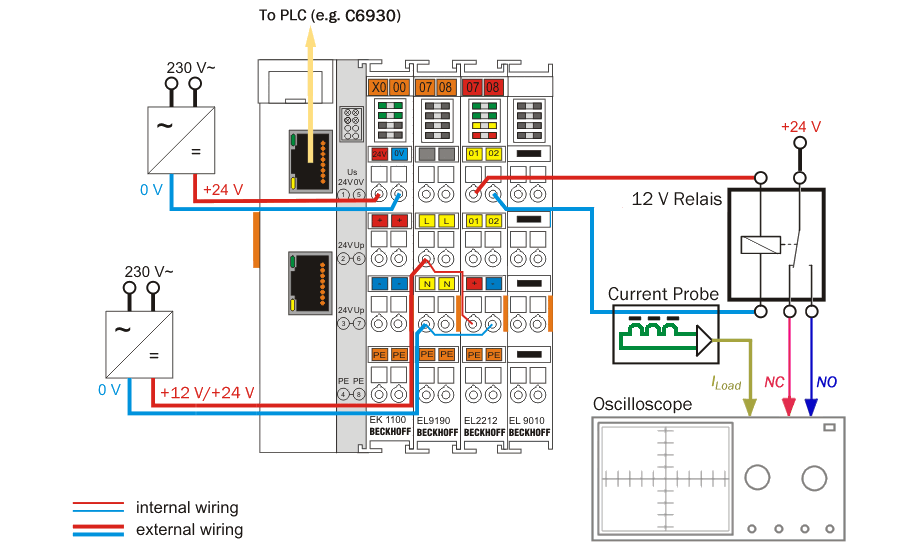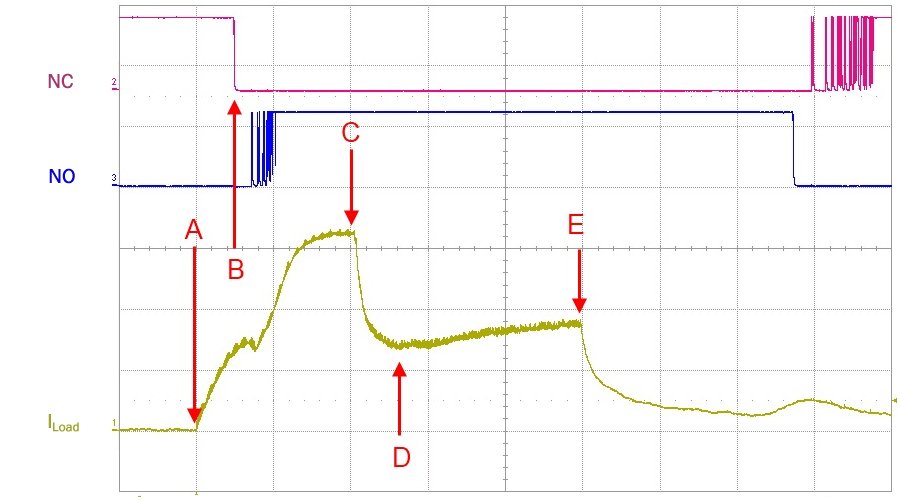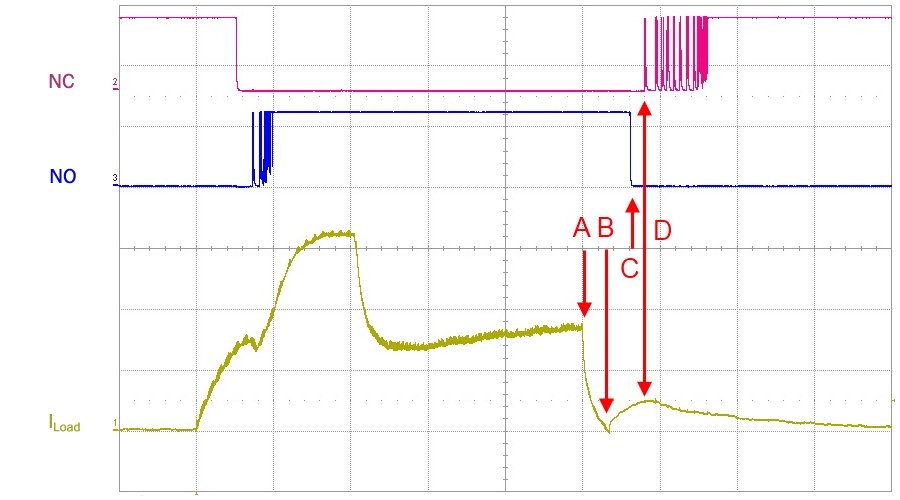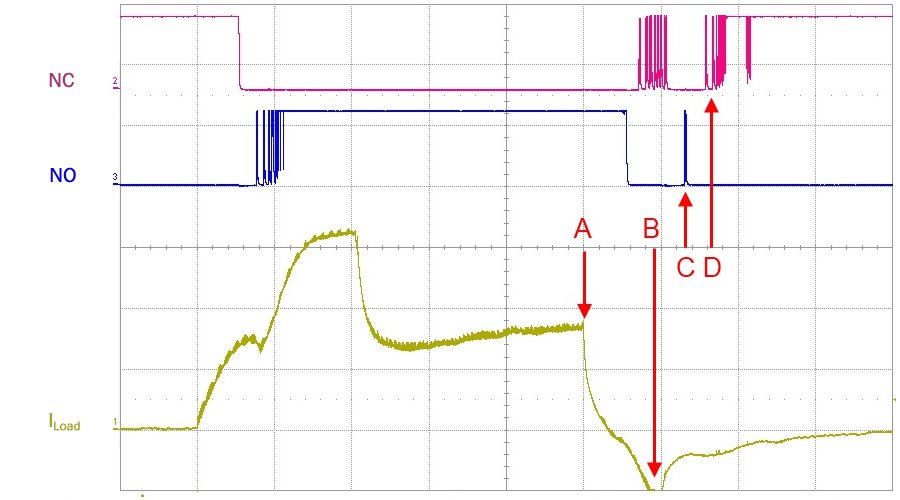Application demonstration 1: 12 V relay
In this example the acceleration of the switching procedure is examined on a small switching relay. In order to determine the effect of the overexcitation, not only the coil current but also the switching side with the changeover is observed with the oscilloscope.
Application data:
- Changeover relay, 12V excitation coil with 50 Ω internal resistance
- Operation of the relay on 12 V nominal voltage
- Operation of the relay on 24V overvoltage with boost-on and boost-off phase
The setup is shown below:
 Fig.166: Setup for Application Demonstration 1
Fig.166: Setup for Application Demonstration 1The EL2212 is connected to the supply voltage. The NC and NO contacts as well as the coil current of the changeover relay are recorded simultaneously on the oscilloscope.
 | Armature spring action When the coil moves the armature plate in the relay, the electrical contacts are connected via spring plates. Therefore there is small time delay in the subsequent recordings between "change of the air gap" and "change of signal on the switching side". |
 Fig.167: 12 V standard operation
Fig.167: 12 V standard operationExplanation:
- The application of current begins at (A).
- After approx. 7 ms (5 ms grid) the NC (normally closed) contact opens (B).
- The coil current drops according to the opening air gap.
- As soon as the NO (normally open) contact is closed and the armature is in the end position (C, D), the coil current increases further up to saturation at 240 mA (E).
- The NO contact bounces on closing (C).
- The switching signal ends after 25 ms and the coil current slowly falls.
- If the air gap between the armature and the coil core opens, the coil current increases; the NO contact opens shortly afterwards (F).
- The NC contact bounces on closing (G).
|
Operation |
Switch-on delay NO |
Switch-off delay NO |
|---|---|---|
|
Standard operation |
8 ms (A - C) |
13 ms (E - F) |
The over-excitation is now activated.
 Fig.168: Overexcitation "Boost-On" activated
Fig.168: Overexcitation "Boost-On" activated Explanation:
- due to the increased excitation current, which rises to approx. 480 mA (C), the contact switches considerably faster (B)
- after 10 ms the overexcitation – the boost-on phase – is terminated and the holding current of 240 mA is regulated (D)
- after 25 ms (E) the signal is switched off again
The boost-off phase is now additionally activated when switching off:
 Fig.169: Boost-off activated
Fig.169: Boost-off activatedExplanation:
- the switch-off (A) works immediately with countervoltage against the coil, causing the relay to switch much faster.
- the mechanical inertia retards the contact; if the air gap at the armature plate opens (B), the coil current increases again.
- the electrical contacts open (C) or close (D), bouncing, shortly afterwards.
- a boost-off phase with a duration of 5 ms and a -100 mA switch-off threshold is used here.
The switch-off process is considerably accelerated by the EL2212.
|
Operation |
Switch-on delay NO |
Switch-off delay NO |
|---|---|---|
|
Standard operation |
8 ms |
13 ms |
|
with boost-on/off phase |
3.5 ms |
3 ms |
Note for accelerated mechanical movement, in this case of the armature plate:
Due to the extremely strong excitation, the armature can be released so quickly that the contacts bounce over the entire opening travel, see the following figure.
 Fig.170: Too fast switch-off procedure with bouncing contacts
Fig.170: Too fast switch-off procedure with bouncing contacts Explanation:
- the switch-off (A) works immediately with countervoltage against the coil, causing the relay to switch much faster.
- a switch-off threshold of -300 mA is selected (B), for which reason a repulsive force is exerted on the armature.
- the changer switches over properly, but then bounces back to NO (C).
 | Mechanical dynamics The user must ensure the proper mechanical function of the actuator. The accelerating effect can be controlled using the phase setting parameters. |